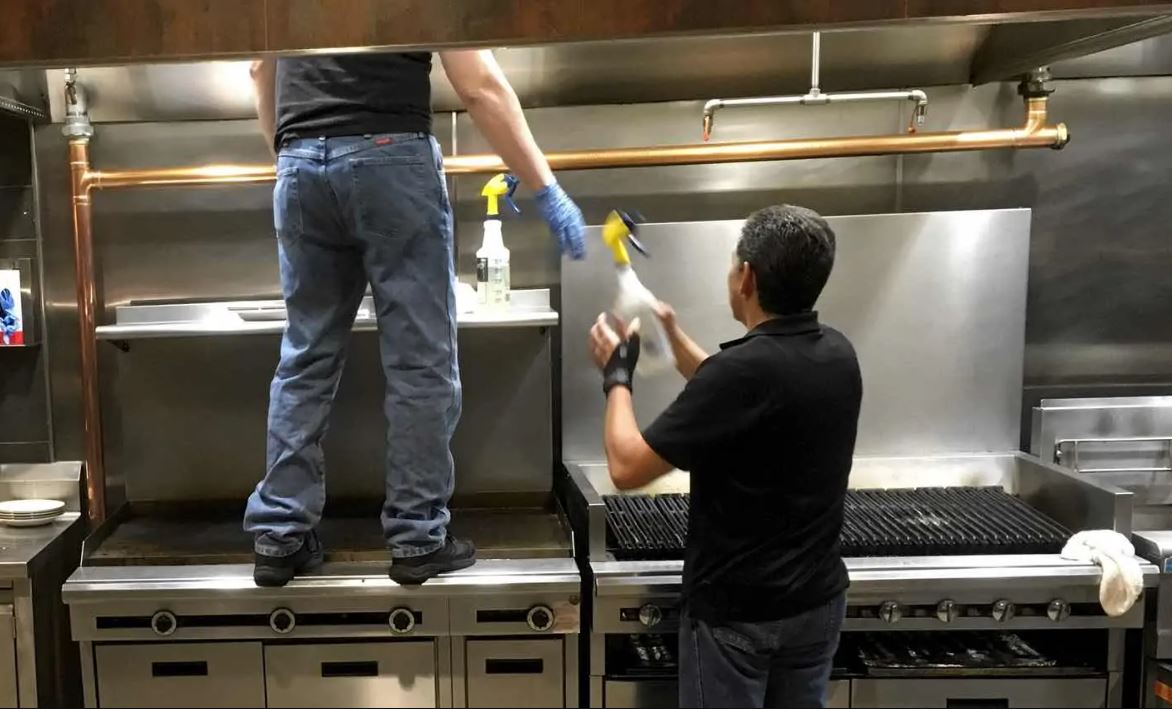In the bustling world of restaurant operations, maintaining the cleanliness and functionality of kitchen equipment is paramount to ensuring quality service and food safety standards. One crucial, yet often overlooked, aspect of this maintenance is the regular cleaning of the restaurant hood. This critical piece of equipment plays a significant role in maintaining a safe and efficient kitchen by regulating air quality and temperature, extracting cooking fumes, and reducing fire hazards.
As such, mastering the art of do-it-yourself restaurant hood cleaning can be a beneficial skill for restaurant owners and kitchen staff alike. This discussion aims to provide a comprehensive guide on the techniques and tips necessary for effective restaurant hood cleaning. We will explore the essential pre-cleaning preparations, tools and supplies needed, a detailed step-by-step cleaning process, and vital post-cleaning maintenance tips.
With this knowledge in hand, you will be well-equipped to ensure the longevity of your restaurant hood and, by extension, the overall health and safety of your kitchen environment.
Understanding Restaurant Hood Functions
A comprehensive grasp of the functionality of restaurant hoods is crucial for their proper maintenance and cleaning. These systems serve as the primary line of defense against potential fire hazards in a kitchen environment. They function by removing excess heat, smoke, airborne grease, and other combustion products generated during cooking.
The core components of a restaurant hood system encompass the hood, filters, ductwork, and exhaust fan. The hood captures the heat and cooking byproducts, with filters trapping grease particles to prevent them from entering the ductwork. The exhaust fan then propels these elements out of the building, maintaining a safe and comfortable kitchen environment.
Understanding how these components interact is essential for effective maintenance. It informs the cleaning process, indicating where grease and particulate matter may accumulate, which if left unchecked, could lead to system failures or, worse, catastrophic fires. Therefore, understanding the functionality of restaurant hoods not only ensures their long-term operational efficiency but also contributes significantly to the overall safety of the restaurant.
Pre-cleaning Preparation Steps
Before delving into the actual process of cleaning the restaurant hood, it’s crucial to undertake several preparatory steps that lay the groundwork for an efficient and effective cleaning procedure.
First, start by ensuring that all cooking appliances are turned off and cool to the touch to avoid accidents. Secondly, in accordance with safety regulations, remove any flammable items or materials from the vicinity. This includes but not limited to, paper products, cloth materials, or any form of oil container.
The next step involves setting up an appropriate cleaning station. This includes having a large bucket filled with warm soapy water, garbage bags for debris, and a range of cleaning tools such as scrub brushes, scrapers, and degreasing solutions.
Don’t forget to prepare yourself as well. Wearing appropriate safety gear is non-negotiable. This includes safety goggles to protect your eyes from chemicals, protective gloves for your hands, and an apron to shield your clothes from dirt and grease.
Lastly, to avoid creating a mess, place absorbent mats or sheets beneath the hood to catch any falling debris or liquid. By following these pre-cleaning steps, you set the stage for a safe, efficient, and effective restaurant hood cleaning process.
Essential Cleaning Tools and Supplies
Having adequately prepared the workspace and yourself for the task ahead, it’s imperative to now focus on the vital cleaning tools and supplies necessary for an efficient restaurant hood cleaning process. The right tools not only simplify the task but also ensure a thorough, deep clean that meets hygiene standards.
The most essential tool is a high-quality degreaser, designed to break down stubborn, baked-on grease. For application, you’ll need a sprayer, and for scrubbing, a long-handled brush with stiff bristles. Gloves and goggles, to protect your skin and eyes from the degreaser, are also necessary.
A pressure washer is another critical tool. This powerful device can blast away remaining grease after you’ve used the degreaser and scrub brush. Ensure you have a suitable catchment system for the water and grease runoff, to prevent environmental contamination.
Additionally, tools such as scrapers and squeegees can provide extra cleaning power, reaching those challenging areas. A good quality ladder will also be necessary to access higher areas of the hood system. Lastly, absorbent cloths and towels are used for final wipe downs, leaving the hood clean and shiny.
Step-by-Step Hood Cleaning Process
Embarking on the restaurant hood cleaning process requires precision and a methodical approach to ensure all areas are adequately addressed and thoroughly cleaned. The first step in the process is to disconnect the power supply to the hood. Next, remove any filters or removable parts and soak them in a degreasing solution.
The second stage involves the hood itself. Using a high-quality degreaser, apply the solution to the interior surface of the hood. Allow the degreaser to sit for a few minutes, and then scrub the surface with a stiff-bristled brush. Pay special attention to corners and hard-to-reach areas where grease and grime may accumulate.
After scrubbing, rinse the area thoroughly with hot water. Ensure that all degreaser and loosened dirt are washed away. Wipe the surface dry with a clean cloth to prevent moisture from causing rust or other damage.
The final step is to clean the filters or removable parts that have been soaking. Scrub them clean, rinse, and allow to dry before replacing them in the hood. Once all parts are dry and replaced, reconnect the power supply. This systematic process ensures comprehensive cleaning of your restaurant hood.
Post-Cleaning Maintenance Tips
To ensure the longevity and efficiency of your restaurant hood, consistent post-cleaning maintenance is crucial. The maintenance routine should be performed regularly to prevent the buildup of grease and other contaminants which can lead to system failure and potential fire hazards.
Firstly, inspect the system for any visible signs of damage or wear, such as cracks, leaks, or loose components. If any are found, they should be promptly repaired or replaced. Secondly, ensure that the hood filters are clean and properly fitted. If they are damaged or heavily soiled, they should be replaced.
In addition to post-cleaning maintenance, it’s crucial to pay attention to the condition of the fan and motor. Both components must remain free from grease and dust accumulation, ensuring optimal performance. A smooth rotation of the fan is indicative of proper functionality. However, if the motor emits unusual noises or if the fan experiences difficulty in rotating smoothly, it’s imperative to seek professional hood cleaning services promptly.
Lastly, maintain a regular cleaning schedule. Frequency of cleaning depends on the type of cooking and volume, but a good rule of thumb is to clean the hood system every three months. Regular maintenance helps to ensure optimal performance and extends the life of the hood system, saving you money in the long run.
The Importance of Hood Cleaning Certification: A Comprehensive Guide
Choosing the Right Hood Cleaning Company: Key Considerations

